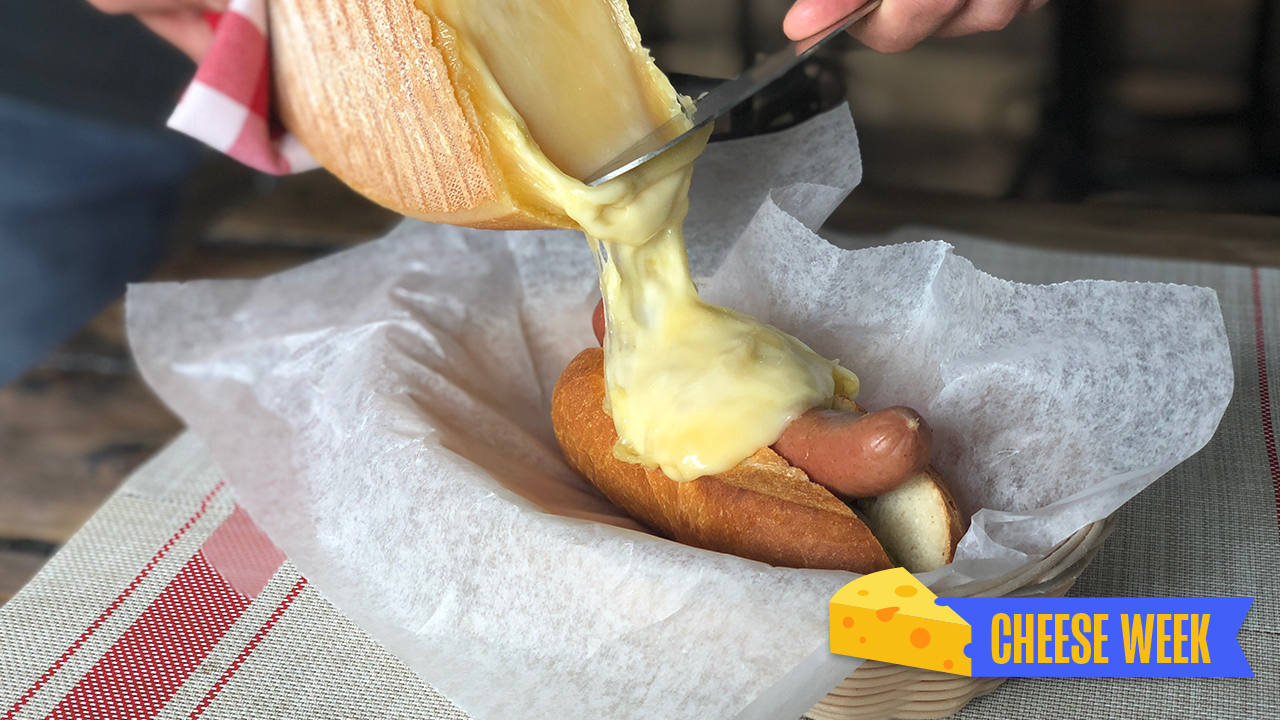Fondue, Imma Let You Finish, But Raclette Is The Best Melted Cheese Of All Time
Welcome to Cheese Week, The Takeout's weeklong praise of cheeses.
Last month my wife and I accompanied some friends on what has become a pre-Christmas tradition: the annual Raclette Adventure. It was really the first time I had heard of anyone—at least within my social circle—make the Swiss melted-cheese delight their endgame. Fondue restaurants often would offer it as a side or appetizer course, but rarely was raclette—in which cheese is melted over a fire and then scraped onto bread or boiled potatoes—the star of the show.
But star it was at our destination: Stable, which bills itself as D.C.'s first Swiss-American restaurant. Stable does serve fondue, but you can get that anywhere (and I've always been a bigger fan of making my own because it's criminally easy).
And when the words "Raclette Dinner Experience" are on the menu, why would you want to order anything else? (If you do want that, make sure you have at least three other people with you and that you call ahead. The Experience requires a minimum of four people with reservations.) Each group gets a grill on which diners can melt their own cheese—on individual pans that hold a single slice—and heat their own accoutrements. The server brings unlimited slices of cheese, cornichons, cocktail onions, and boiled new potatoes.
I've had raclette at the aforementioned fondue joints and at Christmas markets in Europe, but I'd never enjoyed it in such a D.I.Y. format. "It's very traditional in Switzerland to serve it family-style like that," says Silvan Kraemer, co-owner and general manager of Stable. "Almost every household in Switzerland has a raclette grill and that's the way you see it done most of the time now."
In restaurants, I'd grown accustomed to the servers scraping raclette onto potatoes or bread tableside. In outdoor market stalls, the cook would make quite a theatrical performance out of scraping—"raclette" is derived from "to scrape" in French—melted bits from a portion of the gargantuan cheese wheel (the old, traditional method before family-style grills became the norm) before serving it on tubers or a baguette.
Raclette is one of those magical cheeses that's unremarkable when cold, but transforms into a tart, nutty, and wonderfully fragrant masterpiece when heated. The cow's milk cheese has a relatively high fat content, so it melts much more easily than other cheeses and its fatty oil doesn't separate from it as many other varieties.

So why isn't it more of a thing in the United States? (Perhaps Americans should view it as the classiest version of nacho cheese?) I think fondue would be more than happy to share the spotlight—or, at the very least, respect its elders, as historians place raclette's origins about 400 years before fondue's. Raclette emerged in the Swiss and French Alpine regions of Valais, Savoie, and Haute-Savoie as early as the late thirteenth century.
"I think fondue got promoted in a very big way by Switzerland in the '50s or around then because there was a big surplus of cheese that they didn't know what to do with," Kraemer says. "So [the Swiss] did a big promotional push in the U.S. so they could sell a lot of cheese. With raclette, this never happened."
In a venue like Stable, you get the same interactive communal experience that fondue affords diners and, I would argue, with a little less of the mess. Who hasn't had to make an unscheduled trip to the dry cleaners after they splashed themselves with hot, bubbling Gruyere and Emmentaler that failed to stay on a hunk of bread at the end of a stick?
Outside of sit-down restaurants, raclette is considerably more street-food-friendly than fondue, as those Christkindlmarkts throughout Switzerland, Germany, Alsace, Austria, and even the U.S. have proved. I dare you to try to walk around with a scorching pot of melted cheese. Actually, please don't do that. I get enough angry comments as it is.
